We are off trekking again, this time to the very north of Vietnam to the Tonkinese Alps. An area of outstanding natural beauty that is home to a number of minority people that live in the hills and mountains bordering China. Over the years, the region has been intermittently under the control of the Chinese and they still covert it for themselves, sometimes closing the border crossing in a classic fit of pique. The border between Vietnam and China is defined by the Red River and we were able to stand on the Vietnamese bank and peer across to the Chinese town of Hekou where we once planned to exit China.
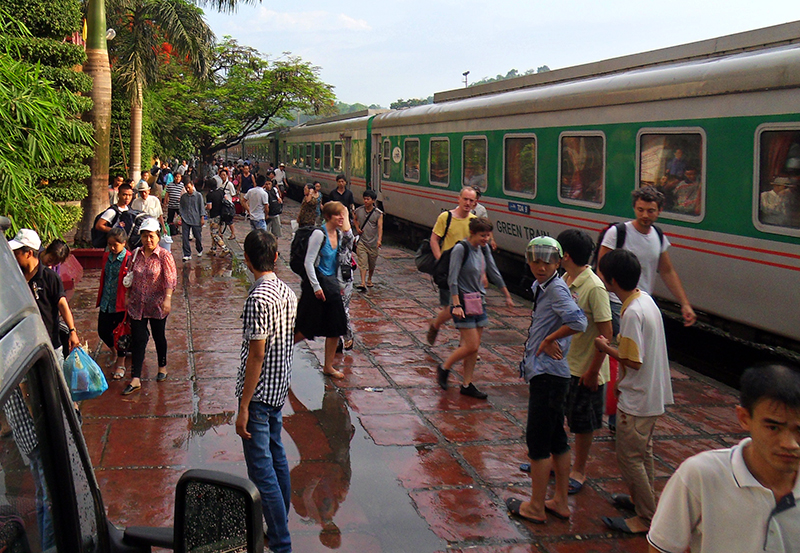 We took the night train out of Hanoi for the mammoth 340km journey to Lao Cai that manages to consume 9 hours. The train lurches and judders along as if drunk and, for those occupying the top bunks, going to sleep is a dangerous sport unless they are tied down. Comfort is not at the top of the train operator’s priorities but, at least, the cabins have air conditioning.
We took the night train out of Hanoi for the mammoth 340km journey to Lao Cai that manages to consume 9 hours. The train lurches and judders along as if drunk and, for those occupying the top bunks, going to sleep is a dangerous sport unless they are tied down. Comfort is not at the top of the train operator’s priorities but, at least, the cabins have air conditioning.
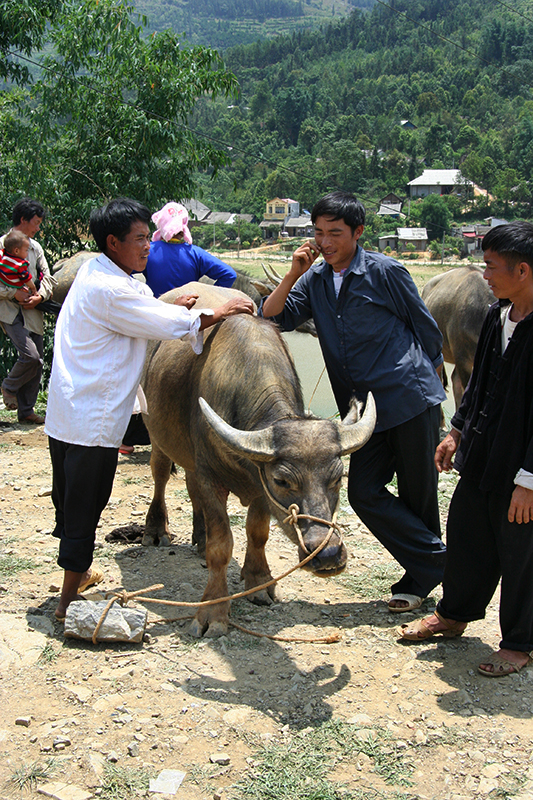 When we finally arrived, and after an unexpected verbal fight with some fellow who nearly managed to persuade us to get into the wrong (his) bus, we set off for the Sunday market at a village called Bac Ha, 700 metres up in the highlands. If buying a water buffalo, pig or horse is at the top of our shopping list, this would be the place to visit. There are any number of animals on offer some of which have seen better days. I negotiated a price of 2,500,000 Dong (US$130) for an average water buffalo but failed to complete the purchase because, I decided, that I preferred the company of my wife. Ducklings, chicken and dogs completed the animal market but it seemed a slow day without much purchasing taking place.
When we finally arrived, and after an unexpected verbal fight with some fellow who nearly managed to persuade us to get into the wrong (his) bus, we set off for the Sunday market at a village called Bac Ha, 700 metres up in the highlands. If buying a water buffalo, pig or horse is at the top of our shopping list, this would be the place to visit. There are any number of animals on offer some of which have seen better days. I negotiated a price of 2,500,000 Dong (US$130) for an average water buffalo but failed to complete the purchase because, I decided, that I preferred the company of my wife. Ducklings, chicken and dogs completed the animal market but it seemed a slow day without much purchasing taking place.
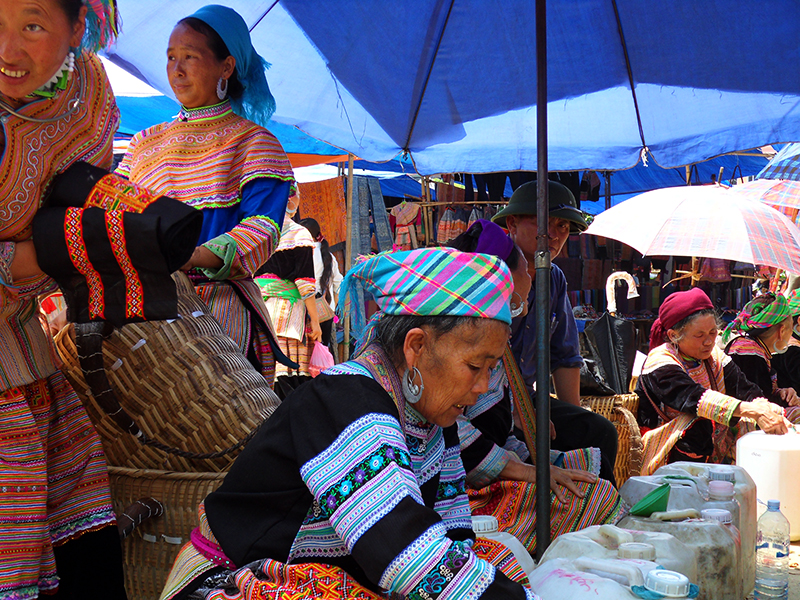 We were able to browse for bottles of the local firewater made from rice, beautifully presented in shabby old water bottles. We tried a few of the free samples we were offered by elderly ladies squatting beneath umbrellas but, after having our mouths explode in flames a few times, decided that we would politely decline any further offers in case we suffered irreparable brain damage.
We were able to browse for bottles of the local firewater made from rice, beautifully presented in shabby old water bottles. We tried a few of the free samples we were offered by elderly ladies squatting beneath umbrellas but, after having our mouths explode in flames a few times, decided that we would politely decline any further offers in case we suffered irreparable brain damage.
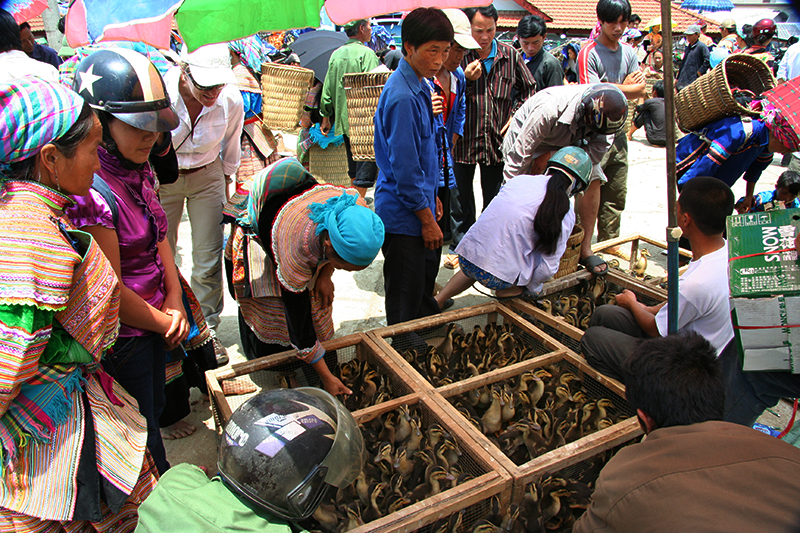 Ignoring the fish, flapping about in slow death and the huge slabs of smelly animal fat, the only purchase we made was for some lychee that Debbie acquired in a snappy blue plastic bag for the princely sum of 5,000 Dong (about 25 cents US). Had we wanted to buy T shirts, items in silk or cotton, or genuine local costume, there were great volumes of it on sale at countless small stalls that lined the streets all around the main animal market.
Ignoring the fish, flapping about in slow death and the huge slabs of smelly animal fat, the only purchase we made was for some lychee that Debbie acquired in a snappy blue plastic bag for the princely sum of 5,000 Dong (about 25 cents US). Had we wanted to buy T shirts, items in silk or cotton, or genuine local costume, there were great volumes of it on sale at countless small stalls that lined the streets all around the main animal market.
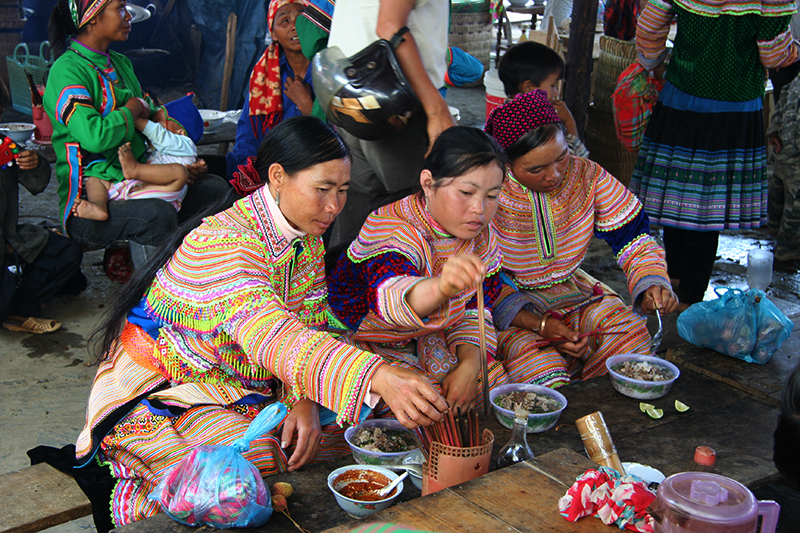 At the centre of everything was a large open space, covered with a tapestry of multicoloured plastic awnings too low to the ground for me to be able to stand up tall, which sold local food from hundreds of small cooking areas. Customers sat on little plastic stools that, in the west, we would purchase from a kids’ toy shop and ate at tables around knee-height. The locals congregated here for lunch together with friends and family making the market as much of a social gathering as a trading opportunity. Noticeably, the men and women sat separately or at least at opposite ends of the low tables. Noticeably also, the women were wearing their national dress whereas the men wore whatever they wanted, which tended to be everyday work clothes.
At the centre of everything was a large open space, covered with a tapestry of multicoloured plastic awnings too low to the ground for me to be able to stand up tall, which sold local food from hundreds of small cooking areas. Customers sat on little plastic stools that, in the west, we would purchase from a kids’ toy shop and ate at tables around knee-height. The locals congregated here for lunch together with friends and family making the market as much of a social gathering as a trading opportunity. Noticeably, the men and women sat separately or at least at opposite ends of the low tables. Noticeably also, the women were wearing their national dress whereas the men wore whatever they wanted, which tended to be everyday work clothes.
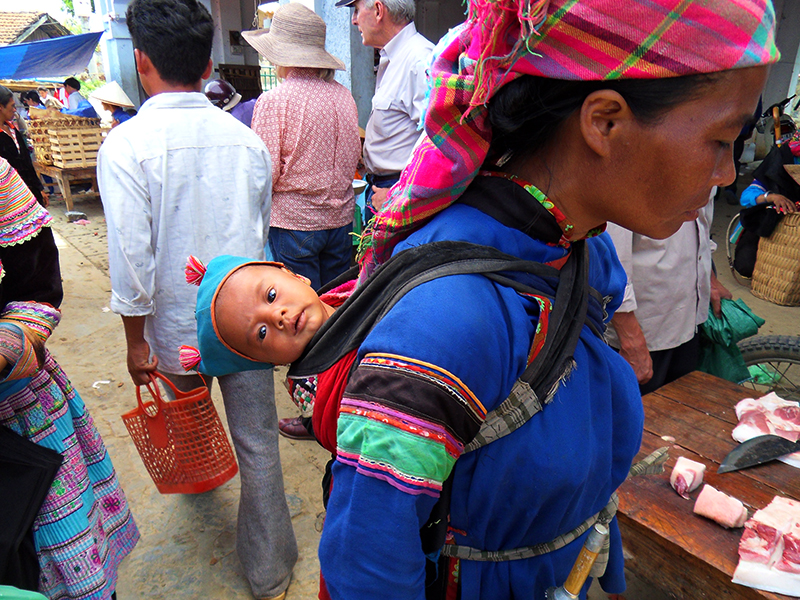 The local people here are from the Hmong minority. The women wore clothes that were based on black and purple but adorned with bright coloured green and yellow edging and beads in an outfit that was both striking and distinctive. Youngsters too young to walk unaided were carried in a shawl arrangement on the women’s backs and remained there the whole day, even during meals. The men did not seem to mix with their women at any time and I cannot recall seeing mixed company anywhere in the market. It was as if they lead completely different lives outside of the home.
The local people here are from the Hmong minority. The women wore clothes that were based on black and purple but adorned with bright coloured green and yellow edging and beads in an outfit that was both striking and distinctive. Youngsters too young to walk unaided were carried in a shawl arrangement on the women’s backs and remained there the whole day, even during meals. The men did not seem to mix with their women at any time and I cannot recall seeing mixed company anywhere in the market. It was as if they lead completely different lives outside of the home.
After the midday meal the market began to wind down and we went off to visit some of the houses surrounding the town. None of the dwellings could be described as weatherproof having walls made from mud or wood but always with large gaps, big enough in some places for me to get my hand through into the interior. Perhaps it was the local method of air conditioning.
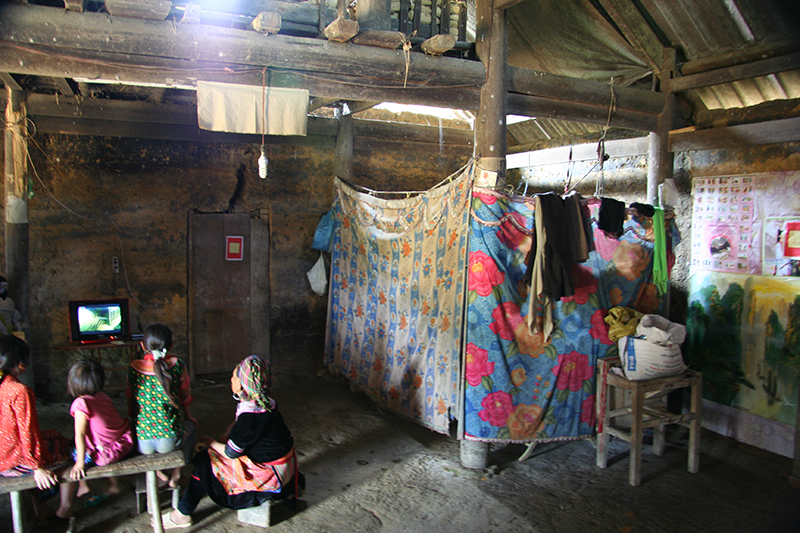 Inside the homes, most of the floors were mud flattened by the weight of human movement with, typically, two rooms. One for cooking and one for everything else (sleeping, eating, socialising). These common rooms always had a working television (some with satellite) that kept the children amused and a CD and DVD player. Children too old to be carried around by their mothers and too young to be in the fields working, were tended by a grandmother who gathered them into a flock like a sheep dog. The interior of the houses was also used to store grain, food and wood for cooking making space a premium especially, I imagined, at night time because there was plainly too few beds to accommodate the entire family.
Inside the homes, most of the floors were mud flattened by the weight of human movement with, typically, two rooms. One for cooking and one for everything else (sleeping, eating, socialising). These common rooms always had a working television (some with satellite) that kept the children amused and a CD and DVD player. Children too old to be carried around by their mothers and too young to be in the fields working, were tended by a grandmother who gathered them into a flock like a sheep dog. The interior of the houses was also used to store grain, food and wood for cooking making space a premium especially, I imagined, at night time because there was plainly too few beds to accommodate the entire family.
Outside there were usually pigs kept in a small covered stockade, chicken and dogs running around and, sometimes duck added to the farmyard mixture. Occasionally water buffalo were tethered to the wall. It was a fascinating insight into how the people lived and, although they seemed perfectly comfortable with odd foreigners tramping through their homes, we still felt like awkward intruders.
Having visited a few homes, we caught the bus up to a small town called Sapa, 1,100 metres higher up at the end of a road that wound its way along the edge of the mountainside. The driver made full use of the entire road displaying no concern whatsoever for anything coming in the opposite direction. A few motorbikes came perilously close to diving over the cliff while taking evasive action. It was an interesting choice: to die under our bus or to die plunging over the cliff. Whatever god these motorcyclists pray to is amazingly adept at keeping them alive.
Sapa was founded by the French as a hill station in 1922 and we can only admire the original settlers’ choice of position. Set amongst the Hoan Lien Mountains, it is perched on a steep slope that overlooks a plunging valley of cascading rice terraces. The highest mountain in Vietnam, Fanispan (3,143 metres), is about 40 km away, or a 5 day return trek.
While its position is superb, not quite the same can be said about the town itself. The steep streets are lined with a mixture of hotels, restaurants, massage shops and tour offices that all announce their business in garish fashion on huge billboards attached to the premises. They are desperately trying to attract business to themselves but the result looks like a jumble sale, as if town planning is carried out in the dark.
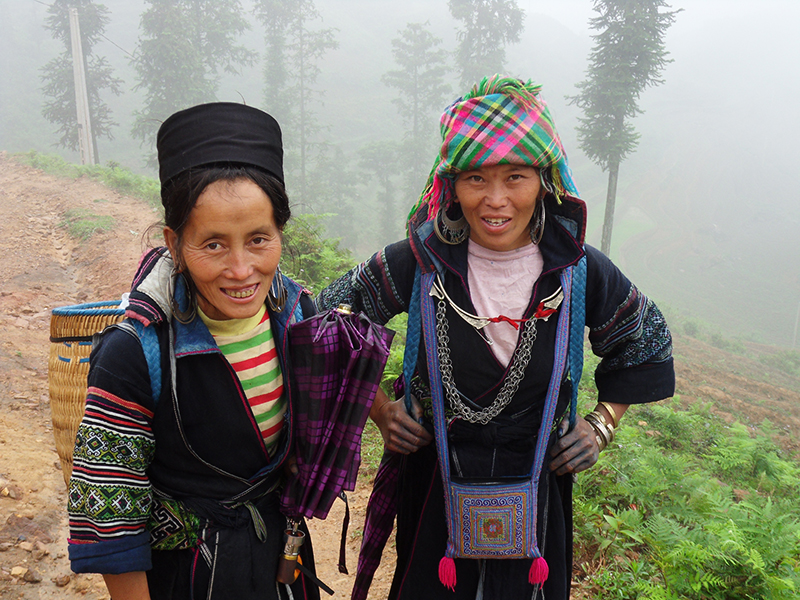 However, we are not here to enjoy the dubious delights of the town and the next morning we set off on a two day trek among the beautiful mountains and passing through villages of people from different minorities. Unfortunately, the weather had turned against us and our journey began enclosed in the drizzle of cloud. We were accompanied by women of the Hmong, one of a number of different clans in this area. They attached themselves to us whether we liked it or not (mostly we didn’t) and all of them kept asking us the same questions:
However, we are not here to enjoy the dubious delights of the town and the next morning we set off on a two day trek among the beautiful mountains and passing through villages of people from different minorities. Unfortunately, the weather had turned against us and our journey began enclosed in the drizzle of cloud. We were accompanied by women of the Hmong, one of a number of different clans in this area. They attached themselves to us whether we liked it or not (mostly we didn’t) and all of them kept asking us the same questions:
‘Where you from?’
‘England.’
‘Nice place. How old you?’
‘105.’
‘Very young. How many babies you have?’
’15.’
‘Oh! You very young.’
‘Yes, it’s my moisturiser.’
‘You buy from me.’ It was a statement not a question. And there was the rub. Unable to sell any of their tourist trinkets to us in town, they felt that, if they walked with us all day, we would have to buy something. They were not aggressive but they were very persistent and, although it seemed quite fun at the beginning to have them walk with us, their company soon became tiresome. But we just had to ignore them.
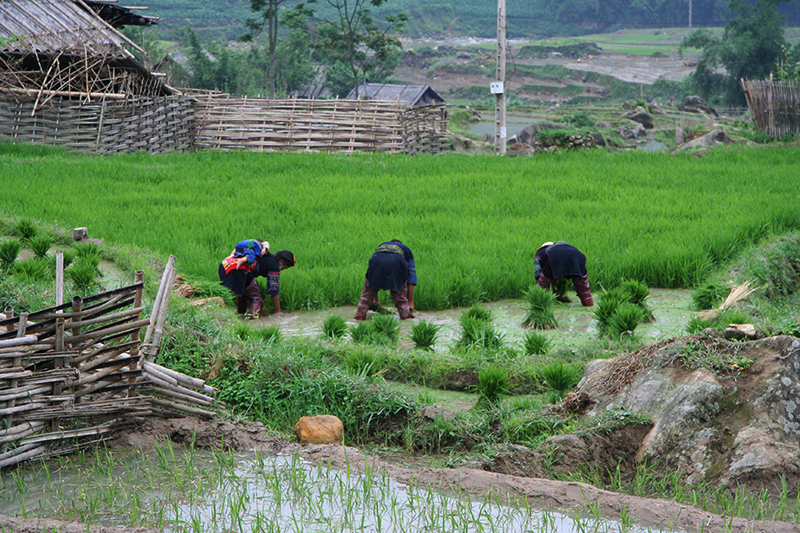 As we walked the cloud began to clear away so that, after about an hour, we could begin to see some distance at last. The terraces of rice stepped down the hillsides all the way from the cloudy mountain peaks to the valley below, ending only when they reached the waters of the Muong Hoa River. The fields were small, maybe 100 square metres each, and full of water and splodgy mud in which a variety of work was undertaken. Some fields were being either ploughed or harrowed using buffalo to drag the tools; some fields were being planted with rice, others having green rice stalks pulled and others having their banks cleaned of grass. The farmers were bent at work, up to their knees in mud, the women with young babies on their backs worked alongside the men and none took any notice of our passing.
As we walked the cloud began to clear away so that, after about an hour, we could begin to see some distance at last. The terraces of rice stepped down the hillsides all the way from the cloudy mountain peaks to the valley below, ending only when they reached the waters of the Muong Hoa River. The fields were small, maybe 100 square metres each, and full of water and splodgy mud in which a variety of work was undertaken. Some fields were being either ploughed or harrowed using buffalo to drag the tools; some fields were being planted with rice, others having green rice stalks pulled and others having their banks cleaned of grass. The farmers were bent at work, up to their knees in mud, the women with young babies on their backs worked alongside the men and none took any notice of our passing.
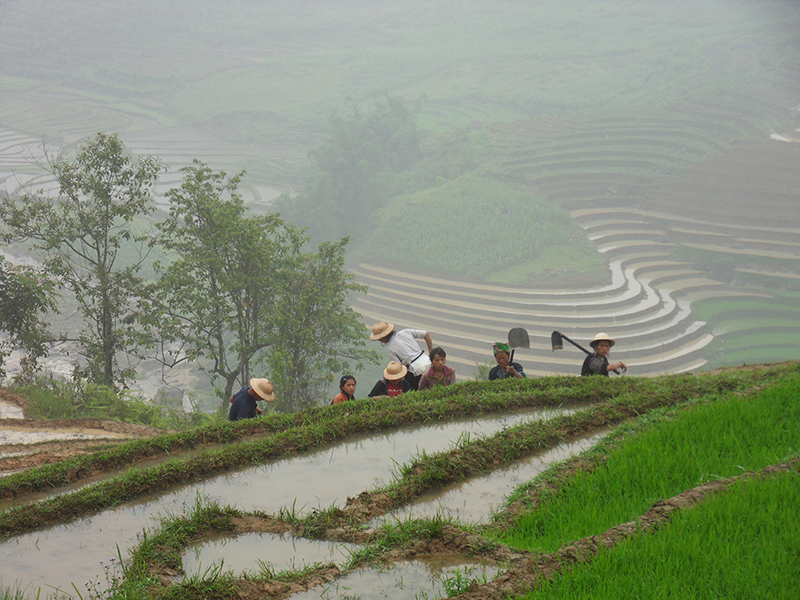 The rice fields filled the view in every direction, unbroken save for a few houses huddled together. It was a strangely magnificent landscape of endless terraces that had turned what once must have been green forested hillside into a brownish grey series of short flat steps. We hadn’t come across anything like it.
The rice fields filled the view in every direction, unbroken save for a few houses huddled together. It was a strangely magnificent landscape of endless terraces that had turned what once must have been green forested hillside into a brownish grey series of short flat steps. We hadn’t come across anything like it.
We lunched at a shack by the river bank where Debbie finally succumbed to the entreaties of the women and, after some hard bargaining, bought some bracelets. It did not, however, give us any peace as we were ‘collected’ by women from the Dzao tribe for the afternoon trek up the other side of the river.
They had been to the same school of English and their conversation was precisely the same and just as limited. We spent nothing with them, sparing our friends back home from presents of garish cloth holdalls and unattractive sequined purses. You can thank us later.
We arrived at a village called Te Van where we were staying in the home of a local family for the night. It was a ‘homestay’, the hill peoples’ equivalent of a B&B only more basic. We had our own room that was exactly the same size as the bed. The bed itself was made from bamboo poles with a mattress one centimeter thick to provide a modicum of comfort but was hard and unforgiving. The doorway, which was the only way to get in and out of bed, had a curtain strung across it on a piece of string for privacy.
The house itself was somewhat upmarket being made with concrete floors and walls and topped off by a corrugated roof. It had a separate kitchen, a squatter toilet (without too many mosquitoes), a separate shower/wash room complete with cold running water straight from mountain streams that was strictly for the hard-assed, and a pleasant terrace overlooking the rice fields.
Dinner was taken with all the family and was a very tasty and pleasant meal complete with plenty of rice wine. Our hosts took much amusement in trying to force as much of the firewater as they could upon us and laughed openly at the faces Debbie made as she forced the local brew down her throat. After dinner, I took the opportunity to ask our host how he viewed Americans now that the war was more than 30 years in the past. He himself had been born since hostilities had ceased but, he said, that every family had someone who had died during the conflict. His uncle had been killed by a bomb and his father had been badly injured by shrapnel in the legs and arm and was now disabled. The chemical weapons used by the Americans, Agent Orange in particular, were still affecting babies born today who had malformed limbs and cranial development problems. These ‘Agent orange Babies’, as they were collectively known, were more prevalent further south but were an ever present reminder of the war. He did not bear a grudge against Americans as such but he hated their government with an obvious passion. It was an interesting parallel to the Argentineans over the Falklands War: they held nothing against the British people, the difference being that they despised their own government.
By this time, the rain had been lashing down for a couple of hours and the lights suddenly failed, plunging the whole village into darkness. Everyone took this as a sign to go to bed so we retired to our space to listen to the music of the rain drumming tunes of varying intensity on the tin roof. We slept fitfully: the hardness of the bed meant that I found it difficult to sleep in any position other than on my back which, of course, was the one position I didn’t want. But we must have got some sleep at some point because we did not notice that the rain had stopped and the lights sprang back into life.
After a fine trekkers’ breakfast of thick pancakes and much shaking of hands with smiles all round, we continued our journey in the heavy morning air. The previous night’s rain had left the trail muddy and sodden making some of the steep descents a physical trial in staying upright. The local women who, once again, appeared as we began walking were now a thorough nuisance, managing always to be in the way especially when we were struggling to stay in control of our feet. Several stretches of the trail became the trekking equivalent of a skiing black run and in no time the deep grooves of our boots became cased in mud rendering them more akin to skis as they lost all grip.
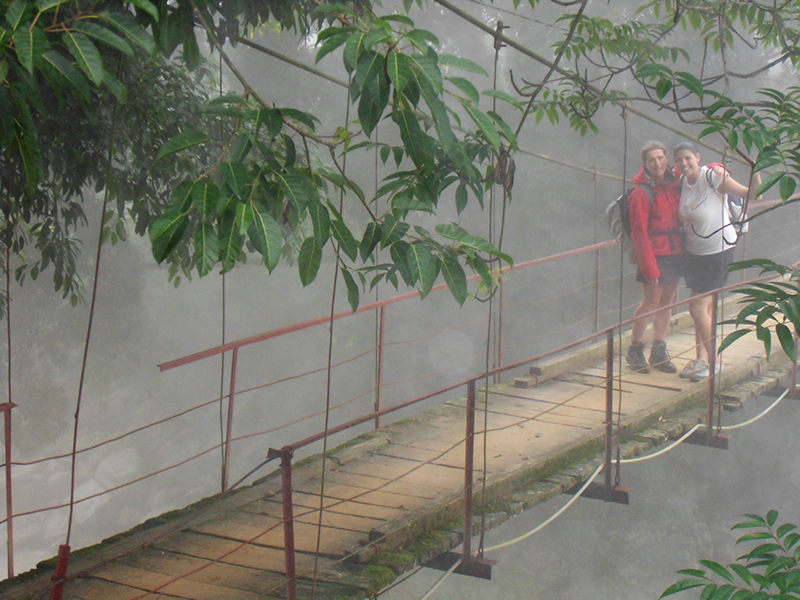 The cloud wrapped around us, obliterating the views and turning the morning into a damp, dark, grey that did nothing for morale and thoroughly dulled the experience. The air was so damp that I swear I hydrated more through breathing than by drinking water. Our clothes and backpacks seemed to absorb the moisture making everything damp but, at least, it was not cold and it kept sweating to half the rate of the previous day. It was a pity that such a fine walk in such beautiful surrounding should end in this manner but, I suppose, we cannot expect to have perfect weather wherever we go.
The cloud wrapped around us, obliterating the views and turning the morning into a damp, dark, grey that did nothing for morale and thoroughly dulled the experience. The air was so damp that I swear I hydrated more through breathing than by drinking water. Our clothes and backpacks seemed to absorb the moisture making everything damp but, at least, it was not cold and it kept sweating to half the rate of the previous day. It was a pity that such a fine walk in such beautiful surrounding should end in this manner but, I suppose, we cannot expect to have perfect weather wherever we go.
After showering and cleaning up back at Sapa, we boarded the night train for another bone rattling experience back to Hanoi. We had the pleasure of walking through the streets at 5.30am to see the city waking up. Residents were emerging from their beds into the streets for some morning exercise before attacking another day. There were games of badminton (with and without a net), Tai Chi, running, dog walking, formation dancing to a ghetto blaster and people using all kinds of props for more strenuous exercise (scaffolding for pull ups). It took half an hour to make it back to the hotel but, even at this early hour, the temperature and humidity broke me into a strong sweat. We had another day in the capital to enjoy before moving on towards somewhere hotter and just as humid.

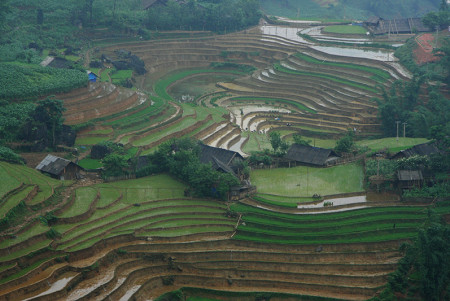
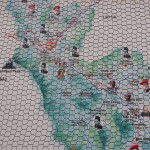
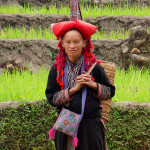
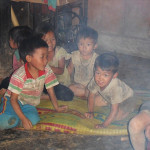
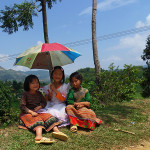
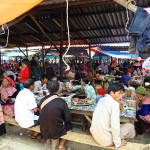
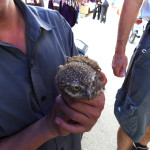
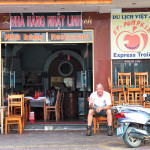
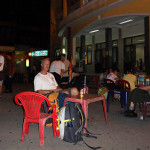
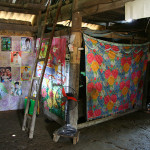
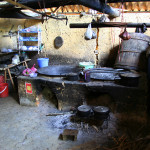
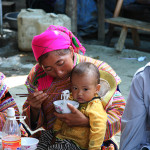
No comments yet.